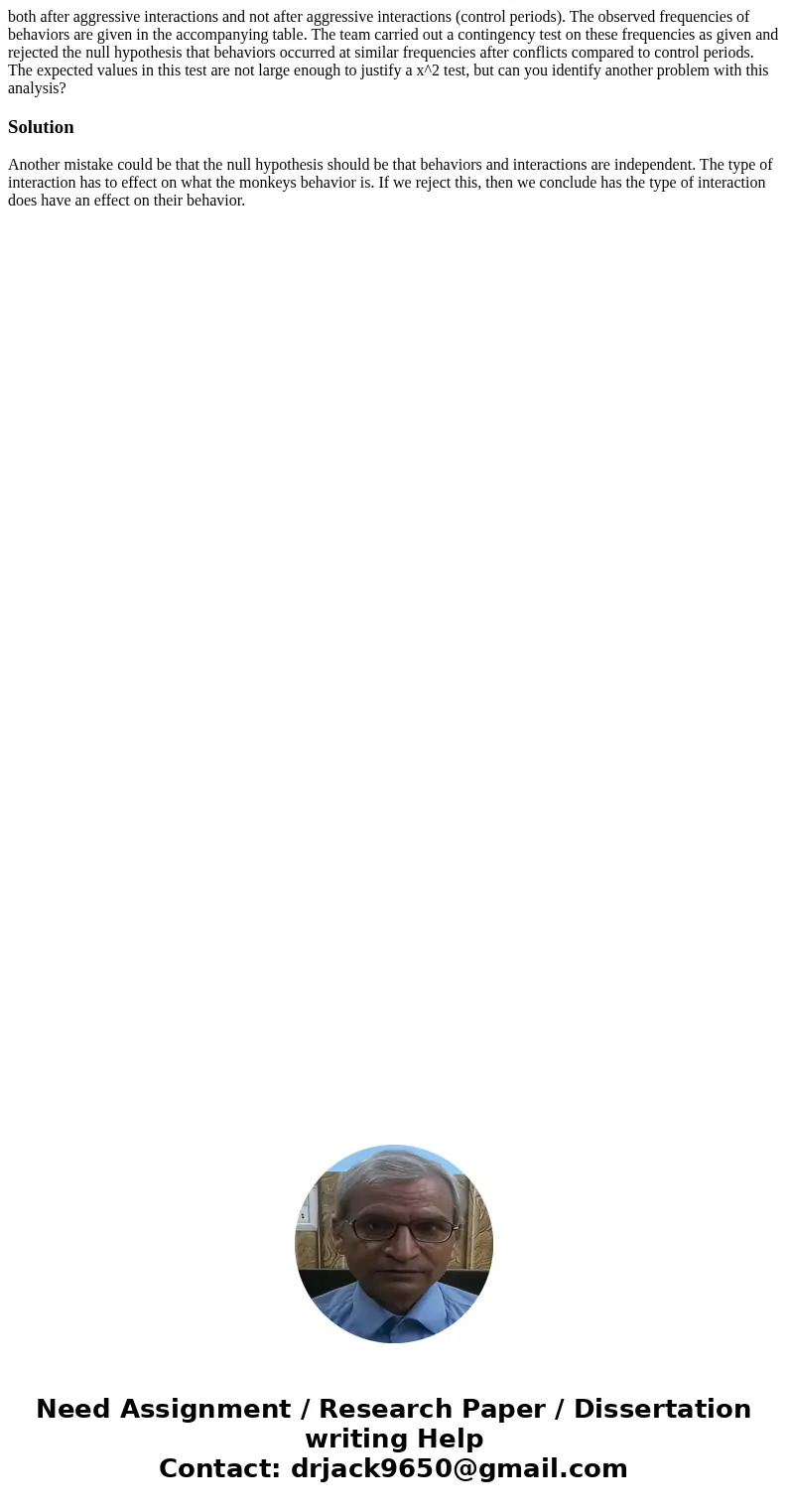both after aggressive interactions and not after aggressive
both after aggressive interactions and not after aggressive interactions (control periods). The observed frequencies of behaviors are given in the accompanying table. The team carried out a contingency test on these frequencies as given and rejected the null hypothesis that behaviors occurred at similar frequencies after conflicts compared to control periods. The expected values in this test are not large enough to justify a x^2 test, but can you identify another problem with this analysis? 
Solution
Another mistake could be that the null hypothesis should be that behaviors and interactions are independent. The type of interaction has to effect on what the monkeys behavior is. If we reject this, then we conclude has the type of interaction does have an effect on their behavior.

 Homework Sourse
Homework Sourse